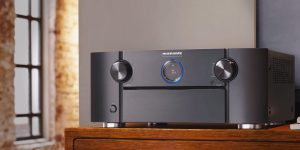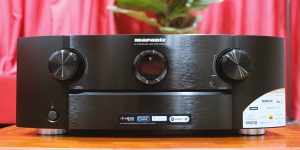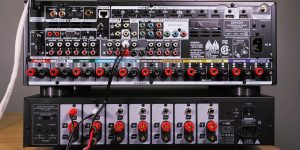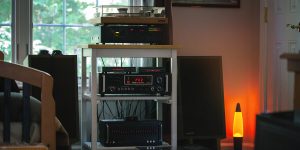Great sound quality is not only dependent on high-end equipment but also on acoustics. I will discuss the common acoustic challenges when setting up a home theater, such as small room limitations, standing waves, and noise isolation. Additionally, I will explore the different acoustic treatment home theater techniques that can be used to enhance sound quality. Finally, I will touch on the basics of soundproofing and answer some frequently asked questions on the subject of room acoustics. By understanding the importance of room acoustics and employing the techniques discussed in this article, you can ensure you get the optimal sound quality in your home theater.
Basics of room acoustics
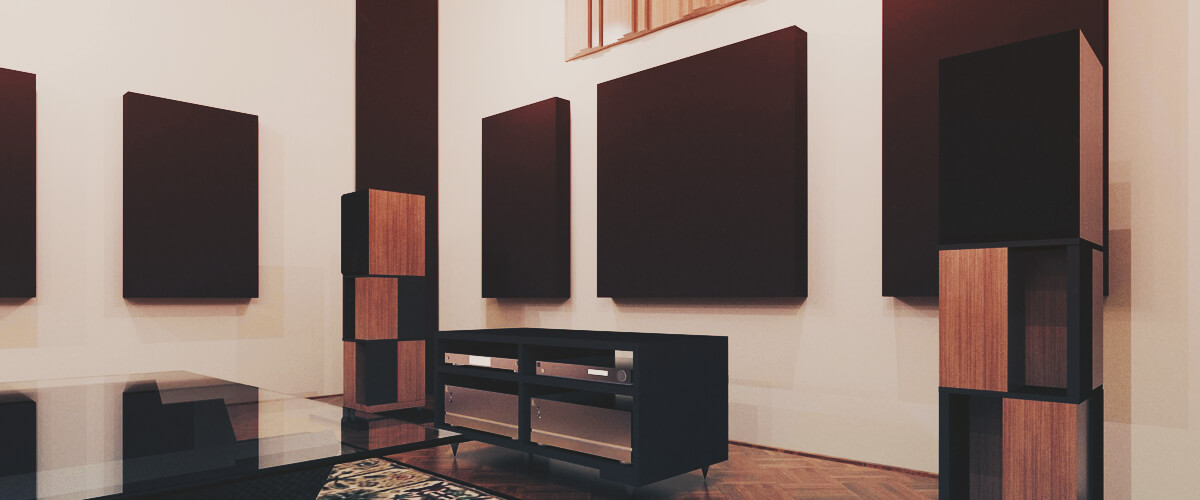
Achieving high-quality sound in home theater acoustics is not only dependent on equipment but also on room acoustics design. The scientific principles of sound waves play a crucial role in determining sound quality.
Understanding sound waves
Sound waves are created by vibrations in the air that travel through the room and interact with the surrounding surfaces. Sound waves can be reflected, absorbed, or scattered after hitting a surface. Reflection occurs when sound waves bounce off a surface and change direction. This can cause echoes and reverberation, which can cause certain problems in a home theater.
Reflection, absorption, and diffusion
Reflection is when a sound wave reflects from one surface to another, creating distortions. Absorption and diffusion are the two most efficient ways to deal with this effect. The absorption process lowers the volume of sound waves mirrored back into space. This is achieved by using materials such as acoustic panels, curtains, and carpets. In turn, diffusion is the process of scattering sound waves in different directions to create a more even sound distribution throughout the room.
Room modes and resonances
Room modes are the natural frequencies at which a room resonates, which can cause standing waves and amplification of certain frequencies. When not properly controlled, this can lead to unwanted peaks and dips in the frequency response, which can impact the overall sound quality in the room. This effect can be minimized by using home theater sound panels, bass traps, and diffuser panels.
Acoustic challenges in home theaters
There are several acoustic challenges that homeowners face. These challenges can significantly impact the overall sound quality of the room. Let me tell you about it in more detail.
Small room limitations
One of the main challenges when setting up a home theater is the limited space available in some rooms. Thus, sound waves can bounce off walls, floors, and ceilings, causing unwanted reflections and echoes in small rooms. This results in a muddied sound that can be unpleasant to the ear.
Parallel walls and standing waves
Another challenge is the presence of parallel walls in the room. Sound waves can travel back and forth between the walls, creating standing waves. These waves can cause peaks and dips in the frequency response, resulting in uneven sound quality.
Reverberation and echo issues
Such problems can also arise in a home theater. These occur when sound waves bounce off surfaces and continue to reverberate or echo long after the initial sound has been produced. This can cause a loss of clarity and intelligibility, making it difficult to hear dialogue and other important audio details.
Noise isolation
Lastly, noise isolation is another crucial challenge when setting up a home multimedia system. This involves preventing outside noise from entering the room and minimizing the escaping sound. Noise isolation can be achieved by using sound-absorbing materials, sealing gaps and cracks in the room, and using specialized acoustic doors and windows.
Acoustic treatment techniques
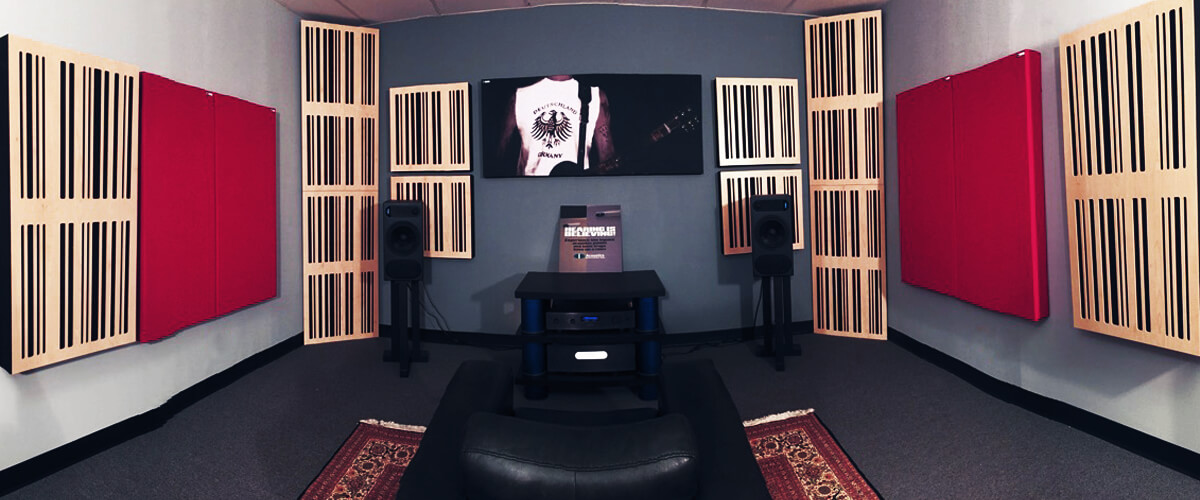
Acoustic treatment techniques can be a game-changer for adjusting the sound at home. These techniques are designed to reduce negative distortions and create a more natural audio experience.
Absorption
Absorption is a method of reducing unwanted sound waves. Installing such panels or other absorbent materials on the walls, ceilings, and floors reduces the strength of sound traveling around the area, resulting in a more controlled hearing environment. These materials capture high-frequency sound vibrations, which aids in reducing reverberation duration.
Acoustic panels
These are common types of absorption. They come in a variety of shapes, sizes, and hues, making it simple to incorporate them into the design of the space. Typically, these walls are made of fiberglass or mineral wool and coated with a cloth that enables sound waves to travel through and be absorbed.
Bass traps
Bass traps capture low-frequency sound waves, which are more difficult to regulate than high-frequency waves. Those are usually found in nooks. This is the area where sound impulses prefer to congregate.
Diffusion
This is a method for equally dispersing sound waves throughout a space. Diffusion can produce a more natural-sounding audio atmosphere by breaking up the path of waves. Diffusers come in a variety of shapes and sizes and are usually installed on the home theater’s back wall to generate a feeling of spaciousness.
Combining absorption and diffusion
A combination of absorption and diffusion techniques is often used to create the best possible acoustics in a home theater. You can create a more balanced, natural sound free of echoes and standing waves by strategically placing absorption panels and diffusers throughout the room. The key is experimenting with different combinations until you find the perfect balance for your room and audio system.
Soundproofing your home theater

While acoustic treatment techniques focus on improving quality within a room, soundproofing aims to prevent it from entering or leaving the room. This is especially important for places where loud sounds can disturb other people in the house or neighbors. Soundproofing involves creating a barrier between the home theater and the rest of the house or outside; several techniques can be used to achieve this.
Decoupling techniques
Decoupling is a technique used to separate the walls, ceiling, and floor from the rest of the house. By creating a gap between the home theater and the surrounding walls, one prevents sound from traveling through solid surfaces. Decoupling can be achieved by using resilient channels, which are metal strips attached to the studs that hold the drywall. Another option that I recommend is to use sound isolation clips.
Mass-loaded barriers
Mass-loaded barriers are heavy materials that can be used to block sound from traveling through walls, ceilings, and floors. Examples of mass-loaded barriers include mass-loaded vinyl and floor underpayments. This method requires a quality and precise installation.
Acoustic sealants and gaskets
These two are used to seal gaps between walls, windows, and doors to prevent sound leakage. Sealants are applied around the edges of windows and doors, while gaskets are placed between the door or window and the frame. They are designed to be flexible and can withstand movement without breaking the seal.




![Best 2-Channel Receiver [Expert Reviews and Buying Guide]](https://hometheaterology.com/wp-content/uploads/2023/11/best-2-channel-receiver-stereo-300x150.jpg)


